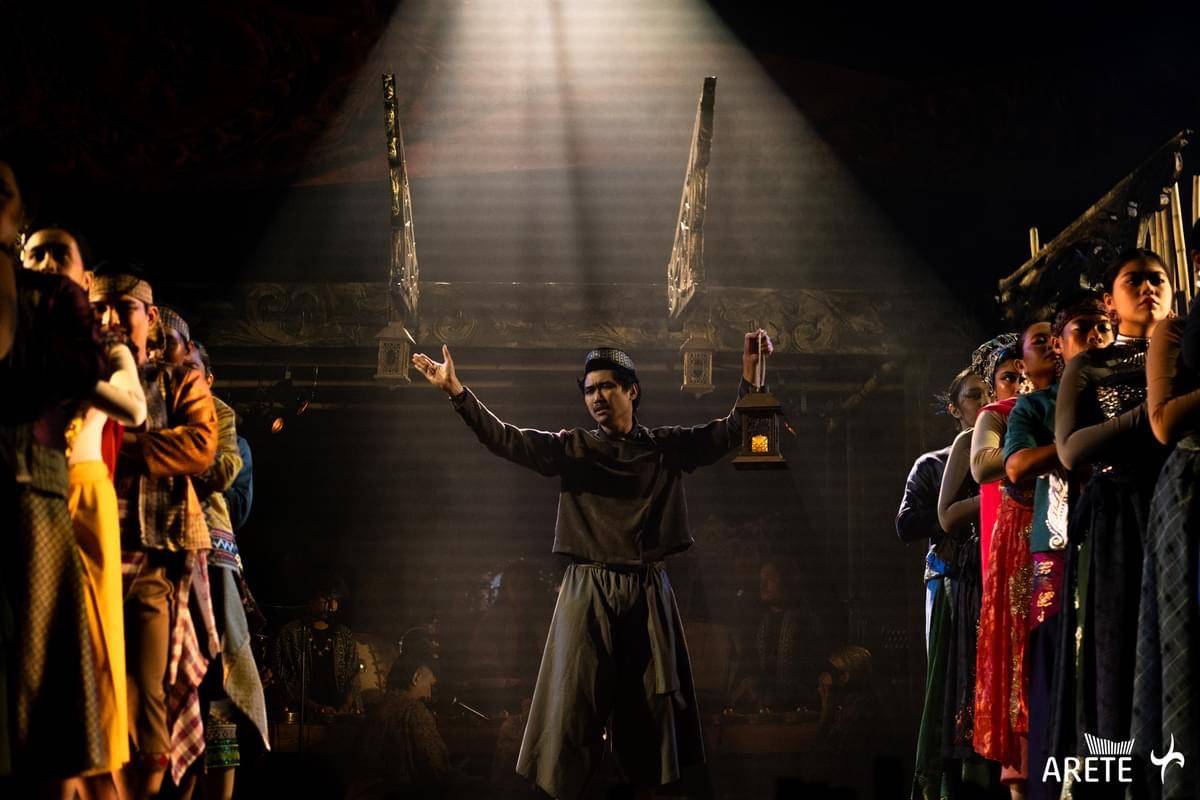A tragedy with a ‘komedya’ touch

Attending a reimagination of a work in a theater company’s classic repertoire presents challenges, in that a viewer who had been an admirer of the original production is necessarily evaluating it through a double lens.
When I caught Tanghalang Ateneo (TA)’s new staging of “Sintang Dalisay” at the Arete on a weekend, I was in the company of a friend who was watching this Filipino “Romeo and Juliet” for the first time, and she was entranced, thoroughly enjoying every novel turn in this unorthodox treatment of the classic tale of ill-fated young lovers. And indeed there was much to enjoy, from the sheer color and kinetic movement of the production to the pace that hardly felt its two-hour (with no intermission!) length. It was “Romeo and Juliet” in exotic (and, dare I say, sometimes bowdlerized) dress and language, yet so well-delivered by a young cast that any Shakespeare aficionado (at least one not too stuffy) had to be thrilled at the unwonted guises of the characters. It was a delight to recognize not only the lovers, now named Rashidin and Jamila, but Friar Lawrence as an Imam, Tybalt as Taupan, and Benvolio and Mercutio conflated into Badawi, investing the audience even more in the story as something both familiar and strange.In my case, it was the third time I was watching a full production, and it was inevitable that my mind kept harking back to those times when the play had been so fresh to me. This was a dozen or so years ago and memory may not serve me well, but it seemed to me that it was the same work, but not the same work, as might be expected when it had been transposed from the more intimate Rizal Mini-Theater at the Ateneo College campus to the grander stage of Arete’s Hyundai Hall. This was now a more “epic” take, a sprawling canvas that evoked a sensory neo-ethnic panorama where I remembered a closer focus on the drama of the central young lovers.

Different lenses
But there’s the merit of different lenses. I admit I missed the more intimate and elegiac feel of my (possibly inaccurate) memory, but then, on the other hand, we had the throbbing exuberance and vivid staging of the current interpretation, under director Guelan Luarca’s harnessing of all the elements of imaginative stage design and intricate choreography. The employment of a brilliantly positioned musical band on stage (which performed terrifically, by the way) alone was worth a rewatch, and there was the wonderful interlude of the leads (Jerome Dawis and Mitzie Lao) in their aching love scene, counterpointing the busyness of the crowd scenes for much of the production—an indication, perhaps, that intimacy and expansiveness can both serve the retelling of a romance.
Where I felt rather more conflicted was what I felt to be an overall “broader” tone to the production, specifically the playing up of the comic treatment to the hilt (which incidentally my friend, and much of the audience, loved). (Again, memory: Was it played similarly 10 years ago?) Comic relief is all part of classic theater, but in this case I could not help feeling it ultimately worked against both the essential tragedy of Shakespeare and the assumed intent to situate the story in a Filipino Muslim ethos, something that had been so memorably evocative in the original staging. I somehow felt that, the language and the beautifully performed igal movements notwithstanding, the spirit of the production was more broadly in the idiom of Filipino komedya, in the crowd-pleasing “tawanan,” “bakbakan” (very well-done), uplifting-ending mode, not to mention injections of topical “contemporary” humor. It could well be a decision—and, judging from audience reactions, largely effective—to pitch the work’s appeal to a young, with-it audience. (Perhaps, such thoughts may just be a reaction from a viewer with boomer preferences.)
Whatever. It was still a happy revisiting of a well-loved TA classic, and incidental discomfort at parts of the reimagination is all to the service of keeping classics alive, where balancing nostalgic preservation and updated audience appeal may be in order. Coming hard on the heels of its “Mga Multo,” TA is on a roll. —CONTRIBUTED by Arturo Hilado

















